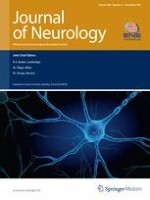Published in:

01-11-2013 | Medical Progress in the Journal of Neurology
Amyotrophic lateral sclerosis: an update on recent genetic insights
Authors:
Yohei Iguchi, Masahisa Katsuno, Kensuke Ikenaka, Shinsuke Ishigaki, Gen Sobue
Published in:
Journal of Neurology
|
Issue 11/2013
Login to get access
Abstract
Amyotrophic lateral sclerosis (ALS) is a devastating neurodegenerative disease affecting both upper and lower motor neurons. The prognosis for ALS is extremely poor, but there is a limited course of treatment with only one approved medication. A most striking recent discovery is that TDP-43 is identified as a key molecule that is associated with both sporadic and familial forms of ALS. TDP-43 is not only a pathological hallmark, but also a genetic cause for ALS. Subsequently, a number of ALS-causative genes have been found. Above all, the RNA-binding protein, such as FUS, TAF15, EWSR1 and hnRNPA1, have structural and functional similarities to TDP-43, and physiological functions of some molecules, including VCP, UBQLN2, OPTN, FIG4 and SQSTM1, are involved in a protein degradation system. These discoveries provide valuable insight into the pathogenesis of ALS, and open doors for developing an effective disease-modifying therapy.
